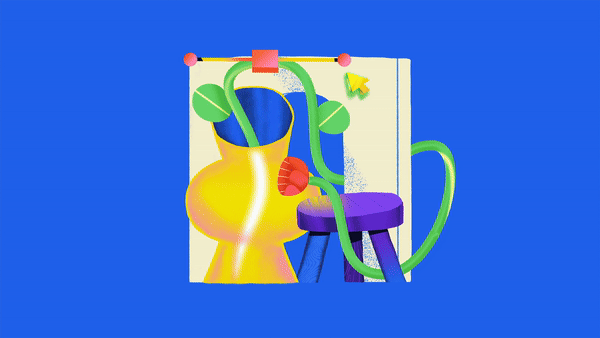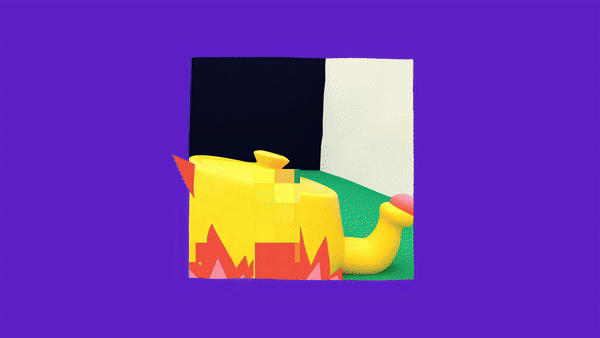Deconstructing other’s work (step by step) ~ (5 min read)
With a free worksheet so it's easier.
Ever watched a piece of animation and been blown away, but also left scratching your head about HOW they pulled it off? That mix of inspiration and "I could never do that" feeling?
Well, there is something to do there to change that.
Instead of just admiring great work, we're going to dissect it. We'll look beyond the pretty visuals and analyze some of the choices they made while creating the piece.
This might turn into a series, so it depends if you like it and leave a comment on substack, or by replying to this email.
Let’s get into it.
By the way, if you are not already, feel free to subscribe.
And if you are, feel free to recommend it to people by pressing this button.
Today’s dissection is to a piece made by Mellow Studio, from Athens.
A little introduction of themselves, as described on their website
Hi! We are a Mellow, a motion & sound design studio based in Athens, Greece.
We make stories, animate them, make them sound vibrant and dress then with music.
So I discovered them because I’ve found their project called The Pipeline on Behance. Here it’s the introduction.
Step into the studio pipeline! In this animated adventure, we're peeling back the curtain to show you the heart of our creative process. From the spark of an idea to the pulse of moving pictures and the rhythm of audio waves, we're bringing you along for the ride.
So, why I think it’s great?
From the start, the project presents a really attractive design. It has a feeling of stylized depth, which feels more than flat even when it has parts that are 2D.
Textures work, it’s not overloaded and blend well with the roughness and stretched angles of the shapes. Which we can also mix with the lowered frame rate.
Altogether helps build its universe, which then it’s consistent in the whole piece.
Then it has this shot, which I think it has a mix of elements that make it stand out.
Unexpected action, that caughts our attention when we are ‘off guard’.
When the hand holds the board and makes it sense like it’s an actual board of ‘toys’, aligned with the transition of the car jumping generates that something clicks in our head.
The feeling of the weight achieved in that shot brings the piece to actually enhance this idea that was mentioning about the design. This stylized 2d that makes the world reach the other dimension.
A good use of animation principles, of bouncing, stretching, overlapping, and followthrough. Recreates this idea where the physics make the whole piece more solid. Because our mind actually believes what it’s seeing.
And then this shot which from my perspective is the other one that really stands out.
It has character.
The teapot and the fire contrast create that boiling sensation that then makes sense when ‘exploding’ into the character transition.
A really nice work of match cut + follow through which guides the eye into the next shot.
Also, another good point to call out on the whole piece is the work on contrast.
One scenes goes into the other while having a cut on the background and how the color combinations make a shift. Which puts us in the new scene quite easily and fast.
Overall a solid piece that coming back to the concept of being ‘their pipeline’ showcases a range of different stages that are the common ground on motion projects.
Credits of this piece:
Concept- Idea: Mellow studio
Creative Direction: Constantinos Kilaris
Art Direction - Illustrations: Ioanna Glykoy
Animatic: Peter Hagis
2d animation:Peter Hagis
3d animation: Angeliki Hristoff
Sound Design: Giannis Andritsopoulos
Please do yourself a favor and check also their website with other projects, worth taking a look.
Training our critical thinking.
The exercise of analyzing other people’s work I think it’s a nice way of training our critical thinking. Even when sometimes it might feel ‘obvious’, I think it’s not.
If it’s the color that stands out, mention it. If it’s the principles, comment on it.
But going through the process of replaying animations that we think are great and commenting why it’s good, I truly believe helps us to become a little bit better.
And if after that you actually create a challenge for yourself of re-creating, or creating a similar piece, double credits on you.
And I’ve have a worksheet to make all this easier.
Where it will guide you step by step to check why you think a project is good.











Thanks for the tip and worksheet. This would definitely make a great series!
Just read your latest email. As always it’s easily digestible, provides a different perspective on how to view my process, and you never fail to give actionable items to help me improve my work. Thanks!